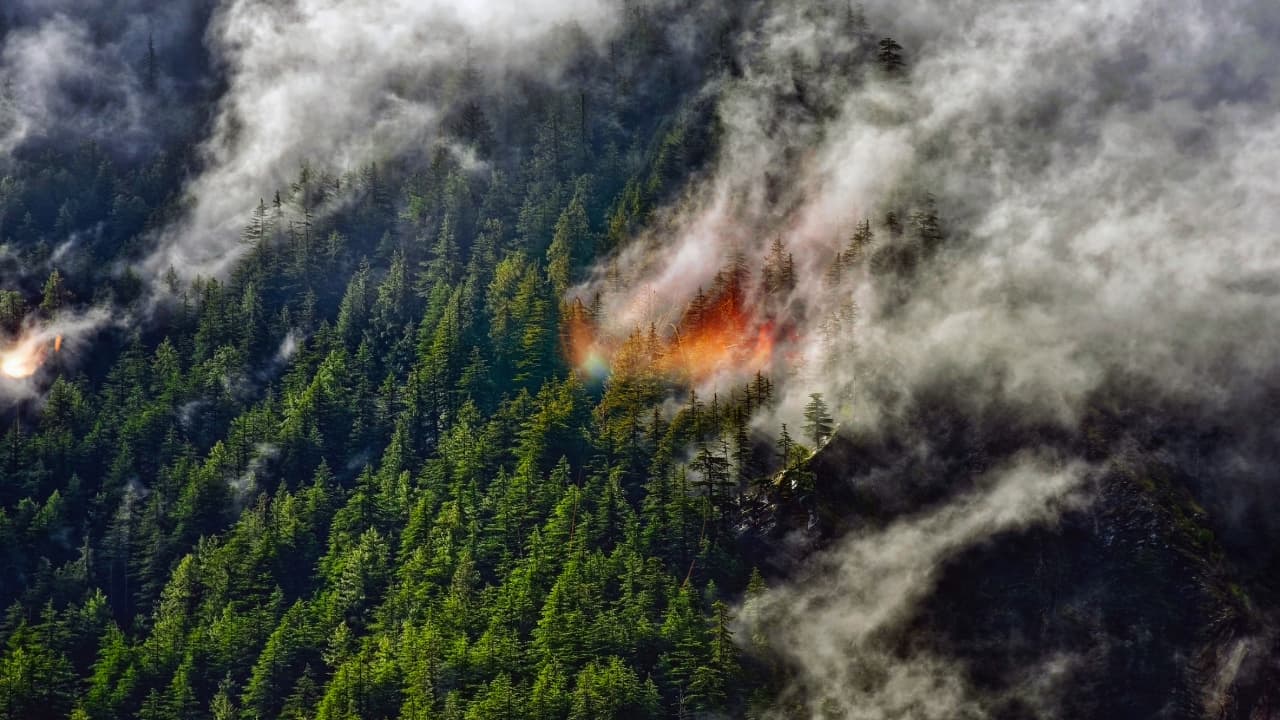UK heat waves driven by climate change are drying out soil and vegetation, increasing wildfire risks even in low-risk areas. A new study finds wildfires could become more common and harder to control across the country.
New research shows that rising temperatures and heat waves in the UK are causing plants and soil to dry out in ways that have never been seen before. And this is making wildfires more likely and more dangerous. A group of scientists, led by the University of Birmingham, examined moisture levels in vegetation and soil throughout the UK. Their findings, published in the journal Communications Earth & Environment, show that heat waves are changing natural processes that usually help prevent wildfires from spreading.
Over three years, the team collected samples from across the country that can act as fuel for fires including live plants, dead vegetation, and soil. This project is the first long-term study of its kind in the UK. As part of their research, they also took additional samples during the 2022 heat wave, a summer that saw a large number of wildfires. Emergency services were stretched to the limit, with a 500% increase in 999 calls and 14 major fire incidents declared.
Normally, dead plants like heather dry out in hot weather, but livings plants usually take in more moisture during the summer, which helps control the spread of fires. In normal conditions, the balance between wet and dry materials helps reduce the risk of large fires
Soil, too, is affected by more than just the weather. It also depends on factors like altitude and the type of rock beneath the surface. This means that moisture levels in soil tend to vary in different areas.
Natural Balance Disrupted
During the extreme heat of 2022, this natural balance was broken. Everything, dead plant, living plants, and the soil, became much drier than usual. This created ideal conditions for fires to start and spread quickly, even in areas that were not typically at risk.
Dr Katy Ivison from the University of Birmingham and first author of the study said, “Man-made climate change is having a serious financial and ecological impact across the UK and leading to wildfires spreading in areas not traditionally at risk.”
She added that similar extreme weather has continued in recent years, including record-breaking heat in 2025, and this may become the new normal.
As the climate changes, the UK is likely to experience more summers like 2022, meaning a higher risk of wildfires that could threaten people, homes, nature, and wildlife.
Changing Fire Seasons
Most wildfires in the UK happen in spring. This is because live plants like heather dry out after the winter and before they “green up” in the summer. This greening process usually acts as a natural barrier to fire, especially in sensitive areas like peatlands. But the 2022 data shows that in extremely hot conditions, even this greening process can’t keep up. Plants that would normally stay moist during the summer became just as dry as the dead vegetation. This means that fires can now spread more easily between areas, a risk that didn’t exist to the same extent before.
The areas most affected during the 2022 heat wave were the South East of England and East Anglia. These regions experienced the highest temperatures, including a record-breaking 40°C in Lincolnshire.
Professor Nick Kettridge, a senior author of the study, said, “We may be substantially underestimating the danger posed by wildfire through the summer, considering the risk to be low in areas of the country that have been historically resistant to summer fire. But heat waves this year as well as 2022 have demonstrated the threat we face.”
As the UK faces more frequent and intense heat waves due to climate change, the natural systems that usually help prevent wildfires are struggling to keep up. Scientists warn that if we don’t adapt and prepare, wildfires could become a far more common and damaging part of life in the UK.
